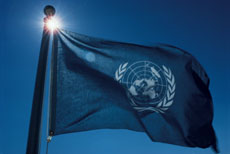International agreements on global warming
 The new agreement will be adopted at the Paris climate conference in December 2015 and implemented from 2020. It will take the form of a protocol, another legal instrument or 'an agreed outcome with legal force', and will be applicable to all Parties. It is being negotiated through a process known as the Durban Platform for Enhanced Action (ADP).
The new agreement will be adopted at the Paris climate conference in December 2015 and implemented from 2020. It will take the form of a protocol, another legal instrument or 'an agreed outcome with legal force', and will be applicable to all Parties. It is being negotiated through a process known as the Durban Platform for Enhanced Action (ADP).
EU vision for the new agreement
The European Commission has set out the EU's vision for a new agreement that will, through collective commitments based on scientific evidence, put the world on track to reduce global emissions by at least 60% below 2010 levels by 2050.
The EU wants Paris to deliver a robust international agreement that fulfils the following key criteria. It must:
- create a common legal framework that applies to all countries
- include clear, fair and ambitious targets for all countries based on evolving global economic and national circumstances
- regularly review and strengthen countries' targets in light of the below 2 degrees goal
- hold all countries accountable – to each other and to the public – for meeting their targets
2015 milestones
The climate conferences in Warsaw (2013) and Lima (2014) agreed that all countries are to put forward their proposed emissions reduction targets for the 2015 agreement as "intended nationally determined contributions" well in advance of the Paris conference.
The contributions will be prepared at national level by each Party, as the EU has done, and submitted to the UNFCCC.
The UNFCCC secretariat will publish these contributions and prepare, by 1 November 2015, a synthesis report to assess whether they put us on track to keep global warming below 2°C.
A negotiating text for the 2015 agreement was agreed in Geneva in February 2015. Before the Paris conference, negotiations will continue at inter-sessional UN meetings in June, September and October in Bonn.

